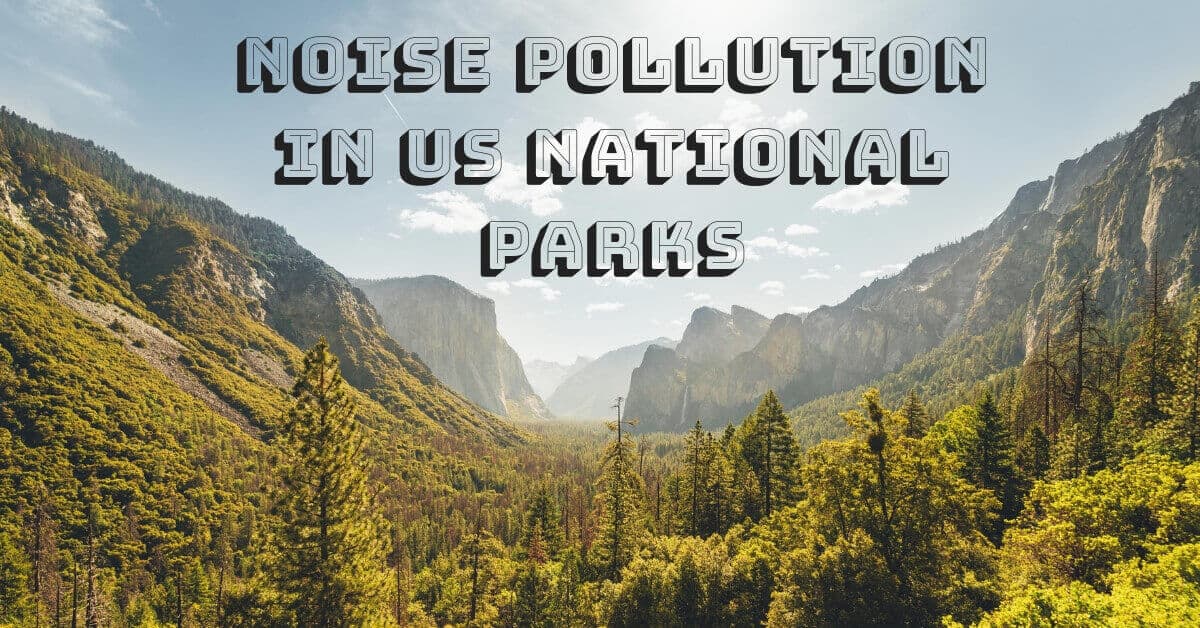Ask people why they love visiting the great outdoors and one of the top reasons you’ll hear is that they enjoy the peace and quiet. However, a new study coming out is showing that in the majority of national parks and wilderness areas noise pollution has doubled, and in some places has increased tenfold.
Human encroachment is the driving force making wild lands louder and the ramifications are big for wildlife populations, the environment and even the humans responsible. As environmental noise rises, animals change their habits, which can send the natural patterns of an ecosystem askew. Plants that rely on animals and insects for pollination and seed dispersal may suffer because of changing animal patterns.
Monitoring Sound
The effort to chart the effect of noise pollution on the American wilderness was undertaken by the National Park Service and Colorado State University. With concern about rising noise levels, researchers monitored ambient sound at 492 sites on protected land across the country. The samples were used to create a map of noise exceedance that covers much of the protected land in the country. Researchers used a computer model to parse the natural ambient noise level of each site and then compared their field monitoring to the baseline environmental noise to accurately understand noise encroachment.
The results were astonishing. In over 60% of wild land studied, noise levels are double their ambient state. For 21% of the land surveyed, noise pollution had driven up sound levels to 10 times as much as they would be without human presence. This kind of jump in sound level isn’t easy to ignore.
Parks and wilderness areas vary widely in their level of protection and human accessibility and the noise pollution map mirrors the amount of human traffic to a large extent. While the study is presenting an intense portrait of noise pollution, it also provides us with a valuable tool for changing course and protecting silent spaces.
A Growing Concern
Why has noise ramped up so dramatically in the undeveloped park and wilderness land in America? Human encroachment, even in air and water space, is the driving force behind the change. Wilderness and protected land account for just 14% of the country’s land area – and human civilization is constantly pushing into undeveloped land. At this current moment, 80% of all land in the United States is no more than a half mile from a road.
Wilderness areas and national parks fared better than other sorts of protected land, such as state parks, remaining far quieter no the whole. Still, 12% of wilderness saw noise pollution doubling the sound level of their natural ambient noise.
Flora and Fauna
Plants, animals, insects and other forms of life are all impacted when the noise level increases so drastically. For predators, increased noise can lessen their ability to track and hunt prey, ultimately driving their populations down. Animals of all types may have important mating and migration habits disrupted by sounds that thwart their ability to communicate and connect.
If rising noise keeps animals from their native habitats the plant life suffers as well. As explained above, many plants rely on symbiotic relationships with animals to spread their seeds and pollinate their flowers. Relationships that have developed in an ecosystem over hundreds of years are being turned on their head by increasing climate uncertainty, environmental pollution and encroaching noise.
The noise exceedance map may hold the key to better managing wild lands. Now, noise levels can be taken into account when planning wildlife corridors and managing human visitation. Quiet areas can be better blocked and monitored for protection of native species and the sounds of civilization better held at bay.
Desert Valley Audiology
Next time you’re out in nature consider the sound footprint you are making, and tread lightly. Noise pollution isn’t great for wildlife and it’s not very good for humans either! Noise exposure adds up over the course of our lifetime to produce noise-related hearing loss.
Have a question about your hearing? Desert Valley Audiology has answers. Set up an appointment with us today for your next hearing checkup or peruse our selection of the best name brand hearing aids and devices. No matter your hearing issue, Desert Valley Audiology can help you connect with the right solutions.

